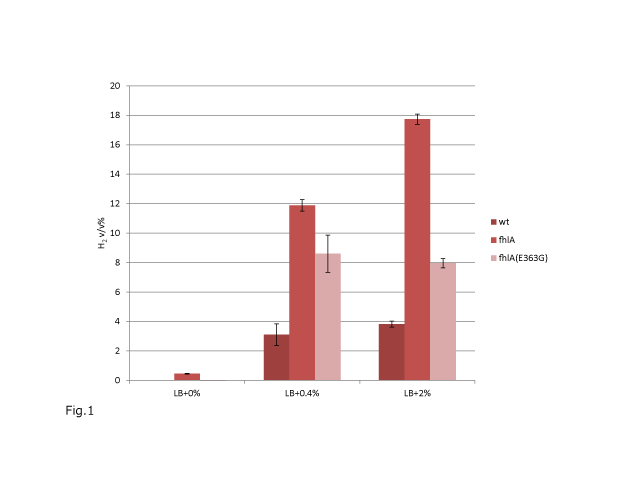Team:UT-Tokyo/Project/H2 E.coli/Results
From 2012.igem.org
| Line 39: | Line 39: | ||
</div><p> | </div><p> | ||
</html> | </html> | ||
| - | {{:Team:UT-Tokyo/Template/Footer|prevname=Home|prevfull=|nextname= | + | {{:Team:UT-Tokyo/Template/Footer|prevname=Home|prevfull=|nextname=Discussion|nextfull=Project/H2_E.coli/Discussion}} |
Revision as of 23:56, 26 September 2012
H2 E.coli: Results

Here our experimental results are given.
Result
We measured the amount of H2 produced by E.coli transformed with either “pLac-RBS-fhlA-d.term”(fhlA) or “pLac-RBS-fhlA(E363G)-d.term”(fhlA (E363G)) by the method written in the page AssayMethods.
In this page, we describe the data.
The result is the following (Fig.1)
Fig.1:H2production in liquid LB medium containing the labeled glucose concentration.
The vertical axis expresses v/v% of H2 in the gaseous phase after we cultivate each E.coli for 8 hours in a container with 1mL each of LB medium and the gaseous phase .The horizontal axis shows the kinds of E.coli and the concentrations of glucose in each medium(“LB+x%” means the glucose w/v concentrations of liquid LB medium is x% more than the usual medium.
The results shown by the Fig.1 is statistically sufficient to conclude the followings.
- The amount of H2 production is fhlA > fhlA (E363G) > wild type in these conditions.
- There is a positive correlation between the amount of H2 produced by fhlA and the glucose concentration in the liquid LB.
The detailed interpretations of this result are done in the Discussion.
 "
"


